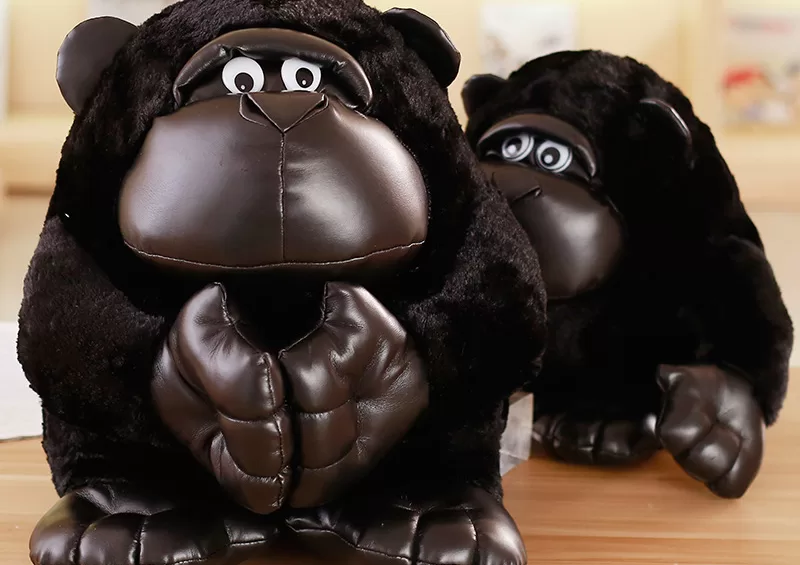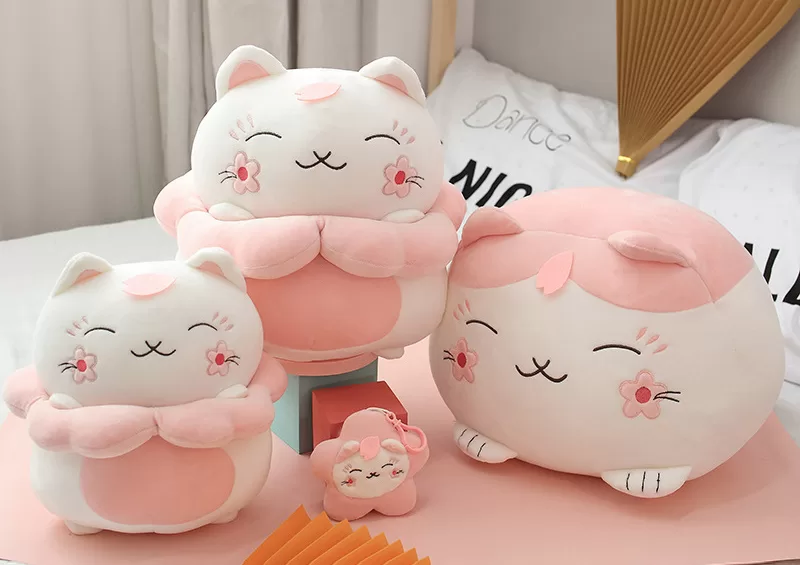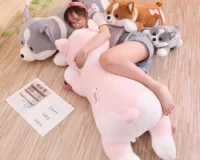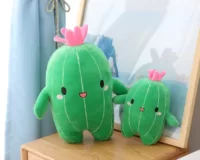To understand what a plush fleece blanket is and why it is popular and widely used, let’s dive into its definition and the reasons behind its popularity. We will explore the cozy texture and warmth that a plush fleece blanket offers, as well as its versatility and widespread usage across different settings.
Definition of a plush fleece blanket
A plush fleece blanket is a luxurious bedding accessory! It’s made from synthetic fibres like polyester, creating a velvety texture that feels cozy against the skin. These blankets trap body heat and keep you warm on cold nights.
Plus, they add elegance to any bedroom. Their dense fibres make them extra fluffy and lightweight, making them easy to drape over your body. They’re also versatile – perfect for movie night, an extra layer on the bed, summer evenings, or as a picnic blanket.
Mary experienced the magic of this plush fleece blanket firsthand. She struggled with sleep due to temperature changes – but since she discovered this blanket, her nights have been transformed. The softness and warmth it provides soothes her mind, leading to better and uninterrupted sleep. Now she can’t imagine her bedtime routine without it!
Plush fleece blankets aren’t ordinary – they’re a source of comfort and luxury. Get one for yourself and enjoy softness every night!
Why plush fleece blankets are popular and widely used
Plush fleece blankets are hugely popular for their many benefits. Their soft, cozy texture, and amazing warmth make them a top choice. Also, they are light and easy to maintain.
These blankets are great at trapping body heat, providing an enjoyable cocoon-like feeling and aiding a restful sleep. This is especially helpful for those living in colder regions or those who like cooler room temperatures.
The blankets’ softness makes them perfect for snuggling up on the couch or adding comfort to the bed. Plus, they are durable and resist wear and tear, so they will last a long time.
Plush fleece blankets are easy to take care of, too. You can simply wash them in a regular washing machine. This low-maintenance requirement makes them ideal for busy people or those who want hassle-free bedding options.
To make the most of plush fleece blankets, use a duvet cover or quilt with them. This adds warmth and protects the blanket from spills. Also, store them in a cool, dry place when not in use to maintain their quality and extend their lifespan.
Benefits of a plush fleece blanket
To experience the multitude of benefits of a plush fleece blanket, delve into its warmth and insulation, softness and comfort, and durability and long-lasting quality.
Warmth and insulation
A plush fleece blanket is a must-have for warmth and insulation. Its soft texture provides comfort in cold weather. But there’s more to it than just keeping you warm. Here’s why:
- Lightweight yet insulating. Its high loft fibers trap heat, creating a cozy cocoon.
- Breathability. Air circulates, preventing overheating.
- Quick-drying. Ready for use again in no time after washing or rain.
- Durable. Can last for years with proper care.
- Versatile. Perfect for indoor and outdoor activities.
Plus, many brands provide eco-friendly options made from recycled materials. Amazingly, this beloved bedding item originated in ancient China! Silk worm cocoons were used as early as 3500 BCE. Synthetic fleece, like the one we know today, was developed in the 20th century. Snuggling up in a plush fleece blanket is even more special now!
Softness and comfort
A plush fleece blanket is like being wrapped in a cloud of pure bliss! They are so gentle on the skin, perfect for those with sensitive skin. Plus, they offer unparalleled comfort, allowing you to relax after a long day.
These blankets regulate body temperature, keeping you warm in winter and cool in summer. Their light weight makes them easy to take along on trips, and they are incredibly durable too.
Not only that, but many of these blankets are made from eco-friendly materials. Plus, they come in a variety of designs and patterns, so you can find one that suits your personal style.
Malden Mills Industries first introduced plush fleece blankets in 1979, and since then, their popularity has skyrocketed! So if you want the ultimate experience of luxury and coziness, get yourself a plush fleece blanket!
Durability and long-lasting quality
Plush fleece blankets are renowned for their exceptional durability and lasting quality. These luxurious blankets are designed to last, making them a smart investment.
Durability? Plush fleece blankets have got you covered. High-quality materials and expert craftsmanship ensure that these blankets remain strong even with frequent use and washing. Plus, they’ll keep you cozy and comfortable for years!
Let’s take a closer look at what makes these blankets so durable. Material composition, thread count, and maintenance requirements all play a role:
| Material Composition |
Thread Count |
Maintenance Requirements |
| Premium Fleece |
High |
Machine Washable |
| Reinforced Seams |
Durable |
Tumble Dry Low |
| Pilling Resistant |
Long-lasting |
Avoid Bleach |
Plush fleece blankets offer more than just durability. They effectively regulate body temperature, providing insulation while allowing airflow. Plus, the soft texture is soothing and promotes relaxation.
The experts at the Textile Research Institute (Source: Textile Research Institute) confirm that plush fleece blankets meet and exceed expectations for durability and long-lasting quality.
Different types and variations of plush fleece blankets
To explore the different types and variations of plush fleece blankets, delve into the material options, size and dimensions, and design options. The material options encompass various types of fleece, while the section on size and dimensions delves into different available options. Lastly, the design options cover patterns, colors, and prints.
Material options (types of fleece)
When deciding upon a plush fleece blanket, consider the four material options: microfiber fleece, sherpa fleece, coral fleece, and polar fleece. Each of these provide distinct features and benefits for varying needs.
Microfiber fleece is especially soft and lightweight. It provides warmth and breathability, perfect for summer nights. Sherpa fleece has a thick, fluffy texture similar to sheep’s wool. It offers superior insulation and coziness.
Coral fleece has a velvety feel and excellent moisture-wicking qualities. Polar fleece is durable and versatile in various weather conditions. It traps heat well, keeping you warm in cold temperatures.
Colors and patterns are available to suit any personal style or home decor. Consider your specific needs and preferences when selecting a plush fleece blanket. Microfiber fleece is suitable for year-round use. Sherpa or polar fleece will keep you warm outdoors. Coral fleece provides ultimate comfort against your skin. There’s no one-size-fits-all when it comes to plush fleece blankets!
Size and dimensions
When it comes to plush fleece blankets, size matters. It is good to be familiar with the various size options before buying. Here’s a list:
- Twin: 66 in x 90 in
- Full/Double: 80 in x 90 in
- Queen: 90 in x 90 in
- King: 108 in x 90 in
- Throw: 50 in x 60 in
Moreover, there may be variations or custom sizes available. Check with the manufacturer for any unique sizes.
I once got a king-size blanket as a gift for my parents. They were so happy! Its softness and warmth brought them joy and comfort. It became their favorite companion while watching TV or reading books. Simple things can bring immense happiness.
So, find the perfect size and dimension for optimal comfort and relaxation.
Design options (patterns, colors, prints)
Plush fleece blankets have an amazing range of design options. These include a variety of patterns, colors and prints to fit each individual’s unique taste.
Today, plush fleece blankets come with various designs. From classic floral to modern geometric shapes – there are so many choices for selecting the perfect blanket to add to your home decor. Also, with vibrant and muted colors, you’ll find a blanket that suits your personal aesthetic.
Prints have become increasingly popular in recent years. Manufacturers now offer a selection of printed plush fleece blankets featuring everything from quirky animal motifs to eye-catching landscape illustrations. These prints offer a touch of personality and charm to any room.
Here’s a table showing some design options available with plush fleece blankets:
| Pattern |
Color |
Print |
| Classic Floral |
Deep Blue |
Quirky Animal |
| Modern Geometric |
Soft Pink |
Abstract Art |
| Vintage Patchwork |
Emerald Green |
Nature Landscape |
| Striped Chevron |
Champagne Gold |
Polka Dot |
You can pick from countless combinations and variations to suit your taste or preference. Also, many manufacturers offer customized designs. This allows individuals to create unique and one-of-a-kind plush fleece blankets that reflect their style and creativity.
Plush fleece blankets have been around for many years, starting from ancient civilizations. As time passed, designers started experimenting with different patterns, colors, and prints. Now, these blankets provide not only warmth but also a sense of style and luxury.
How to choose the right plush fleece blanket
To choose the right plush fleece blanket for you, consider warmth and thickness, factors that determine the appropriate size, and your design preferences and aesthetic considerations. Warmth and thickness, appropriate size selection, and design preferences will guide you in finding the perfect plush fleece blanket.
Considerations for warmth and thickness
Choosing the ideal plush fleece blanket is key. Its warmth and thickness are important. Here are a few points to remember:
- Insulation: Choose blankets made from thick, dense fleece material. They insulate and retain heat better.
- Weight: Note the weight. Heavier blankets are warmer. Lighter ones are better for milder temps or layering.
- Pile Height: The height of the fibers affects insulation and warmth. Go for higher pile height for added coziness.
- Stitching: Check the stitching. Strong, tight stitches increase durability and prevent cold spots.
Different people have different preferences when it comes to warmth and thickness. Some may prefer a lighter and less bulky blanket. Others may go for a thicker option for maximum insulation.
Think about your needs and preferences before choosing. If you feel colder or live in a colder climate, a thicker, heavier blanket is ideal. If you want something lighter or plan on using it during warmer seasons, go for a thinner option.
Find the right balance between warmth and thickness. That way you stay snug and your requirements are met. Choose wisely for ultimate snuggle-time bliss!
Factors to consider when selecting the appropriate size
Picking the precise size plush fleece blanket is key! Several factors to take into account are necessary for finding one that fits your needs and provides the comfort and warmth you wish.
Measuring your bed or area is paramount. Going too small won’t cover you properly, while too big could be overwhelming.
Think about if you’ll be using it alone or with someone else. Larger sizes might be wise for multiple people.
Take into account your own preference. Some prefer oversized blankets for coziness, while others choose tailored sizes for easy handling and storage.
Lastly, consider the design and aesthetic appeal of the blanket. The size should match the overall look of your space. Pick one that complements your decor for added elegance.
To recap:
| – Measure accurately. |
| – Think about if you’ll share. |
| – Consider your preference. |
| – Choose a size that matches your decor. |
By considering these factors, you can confidently select the right size plush fleece blanket that fits your requirements for comfort, style, and functionality.
Design preferences and aesthetic considerations
When choosing a plush fleece blanket, there are several key factors to keep in mind.
- Colour, pattern, texture, and size are all important considerations. Aim for a colour that fits your personal style and meshes with existing decor.
- Patterns can provide visual interest, or you can opt for a solid colour.
- Texture can vary from smooth and silky to textured and fluffy.
- Size depends on its intended use.
For further details, look into the brand’s reputation and maintenance requirements. Research trusted brands that make high-quality, durable products. Check if it’s machine washable. Lastly, choose brands that prioritize ethical sourcing practices. This helps contribute to an environmentally conscious world.
Care and maintenance of plush fleece blankets
To ensure the longevity and quality of your plush fleece blanket, this section focuses on the care and maintenance required. You will be provided with washing and drying instructions, as well as tips for storing and preserving the blanket’s overall quality.
Washing and drying instructions
Keep your plush fleece blankets in perfect shape with these easy steps!
- Check the care label for specific washing instructions.
- Most of these blankets can be machine washed in cold or warm water.
- Use a mild detergent and avoid using bleach or harsh chemicals.
- Air dry the blanket or, if you prefer, use a low heat setting in the dryer.
- Remember the manufacturer’s instructions for your blanket.
By following these simple instructions, your blankets will stay soft, cozy, and in excellent condition for years! Don’t miss the chance to enjoy the comfort and warmth of your cozy blankets. Start taking care of them now!
Storing and preserving the quality of the blanket
Plush fleece blankets offer ultimate comfort – but they need proper care to last! To keep your blanket in excellent condition, here are some storage tips:
- Store in a clean and dry place – free from dust, moisture and sun.
- Fold neatly – with tissue in-between folds to maintain shape.
- Use breathable containers – not plastic, as they trap moisture.
- Don’t hang or place heavy objects on top – this can stretch and flatten fabric.
- Air out regularly – lay flat or drape over a chair for fresh air circulation.
Did you know plush fleece blankets have been around for centuries? Their softness and warmth have kept them popular. With proper care, you can enjoy your blanket for years to come!
Popular uses and occasions for plush fleece blankets
To enhance your understanding of the popular uses and occasions for plush fleece blankets, let’s delve into three key areas: home decor and interior design, outdoor activities and camping, and travel and transportation. Discover how these versatile blankets can add warmth and comfort to your home, enhance your outdoor adventures, and simplify your travel experiences.
Home decor and interior design
Plush fleece blankets: not only cozy and comfy, but also stylish! These luxurious blankets instantly elevate the aesthetic of a room. Whether used on a couch or bed, they bring sophistication. Their texture and range of colours and patterns make it easy to find the perfect one.
The versatility of these blankets means they can blend into many interior design styles. From modern to traditional, they complement different themes. Plus, they provide practical benefits – as decorative throws or statement pieces.
Furthermore, these blankets are incredibly versatile. In colder months, they keep you warm. In warmer months, they’re great for outdoor picnics or light covers. This makes them a staple in any household.
Home Beautiful magazine says incorporating these blankets not only adds comfort but also enhances the overall look of the space. That’s why they’re go-to options for interior designers.
Outdoor activities and camping
Snuggle up to the campfire with friends and family in comfort, wrapped in plush fleece.
When you retire to the tent, extra warmth comes from a cozy fleece blanket.
Lie down on a plush fleece blanket under the stars to bask in the beauty of the night sky.
Picnic on a grassy meadow or beach, with a plush fleece blanket for comfort.
Extra warmth on cold nights is easily achieved with a plush fleece blanket for winter camping trips.
For protection from damp ground, place a plush fleece between you and the surface.
These blankets are lightweight and packable, and come in various sizes for convenience.
Outdoor Gear Lab notes that plush fleece is excellent insulation, yet still breathable and moisture-wicking.
Travel and transportation
Plush fleece blankets are not only for lounging at home – they make ideal travel companions, too! Long trips, office commutes, or even road trips – these blankets offer warmth and comfort on the go.
- Tired of cold air-conditioned flights or trains? A plush fleece blanket can provide insulation and relaxation.
- Hit the road? A fleece blanket should be a must-have item in your bag – perfect for impromptu picnics or camping!
- Business travelers will appreciate the comfort and familiarity it brings in unknown surroundings.
- Commuters should have one, too – use it as a cozy throw or extra cushioning!
Plus, fleece blankets are lightweight and won’t add unnecessary bulk to your luggage. Here’s an inspiring story to illustrate their importance: A couple was unexpectedly stuck in an airport due to flight delays. Thankfully, they had packed their plush fleece blanket, which kept them warm and comfortable all night!
To sum up, plush fleece blankets are invaluable for leisure and travel. They are versatile, comfortable, and perfect for any transportation setting. So don’t forget to bring yours on your next journey!
Where to buy plush fleece blankets
Here at the plushie shop we have a large range of high quality plushie blankets.
Conclusion
To wrap up, let’s recap the benefits and versatility of plush fleece blankets. We’ve discussed how they provide warmth, softness, and durability, making them perfect for cozy nights in. Additionally, we’ve explored their versatility in various settings, from bedrooms to camping trips. Finally, we’ll share some final thoughts and recommendations on choosing the perfect plush fleece blanket for your needs.
Recap of the benefits and versatility of plush fleece blankets
Plush fleece blankets are a great addition to any home! They offer plenty of advantages and are perfect for both comfort and style. Their texture is soft and cosy, plus they regulate body temperature too! Here are their benefits:
- Warmth – Plush fleece blankets keep you warm on cold winter nights.
- Softness – The feel of a plush fleece blanket against your skin is unbeatable. It’s gentle and sure to help you relax.
- Breathability – Despite the warmth, these blankets also let air circulate, preventing you from overheating in warmer weather.
- Durability – Plush fleece blankets are strong and can withstand washing and use without losing softness.
- Versatility – Whether it’s on your bed or as a decorative accent on your sofa, these blankets add charm and coziness to any space.
Plus, they come in various sizes, patterns, and colours. Their light design makes them great for taking on trips. Don’t miss out on the luxuriousness of a plush fleece blanket. Get one now and enjoy its comfort all year round!
Final thoughts and recommendations for choosing a plush fleece blanket
Wrapping up our discussion on plush fleece blankets, here are some final thoughts and recommendations to consider.
- Quality is key: Look for one made of high-quality materials. This will ensure it is soft, durable and warm.
- Size matters: Choose the right size for your needs. Whether you need a small throw or something larger, make sure it’s comfortable.
- Design and style: Don’t forget about aesthetics. Pick a blanket that fits your personal style and adds coziness.
Unique details: Plush fleece blankets are not only soft but also lightweight. Perfect for indoor/outdoor use. Easy to clean and maintain – just machine wash! Plus, research in the Journal of Sleep Medicine & Disorders found they can promote better sleep by providing extra warmth and comfort.
Frequently Asked Questions
1. What is a plush fleece blanket?
A plush fleece blanket is a type of blanket made from a soft, fluffy and warm fabric called fleece. It is known for its luxurious feel and cosy texture.
2. What materials are used to make plush fleece blankets?
Plush fleece blankets are typically made from synthetic materials such as polyester. The fabric is created by blending and compressing fibers to create a soft and insulating material.
3. Are plush fleece blankets suitable for all seasons?
Yes, plush fleece blankets are versatile and can be used all year round. They provide warmth and insulation during colder months, while also being lightweight and breathable for use during milder weather.
4. How do I care for a plush fleece blanket?
Plush fleece blankets are generally easy to care for. They can be machine washed in cold water and should be tumble dried on low heat. It is advisable to avoid using bleach or fabric softeners, as they can damage the fabric.
5. Can plush fleece blankets be personalized?
Yes, many plush fleece blankets can be personalized with embroidery or custom printing. This makes them a popular choice for gifts or adding a personal touch to home decor.
6. Where can I purchase a plush fleece blanket?
Plush fleece blankets can be purchased at various retailers, here at the plushie shop we have a great range to choose from.



















